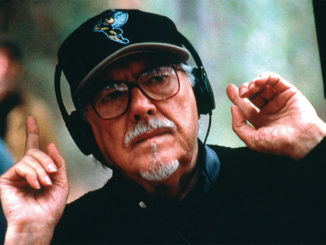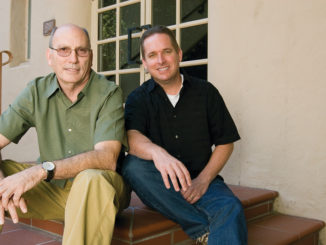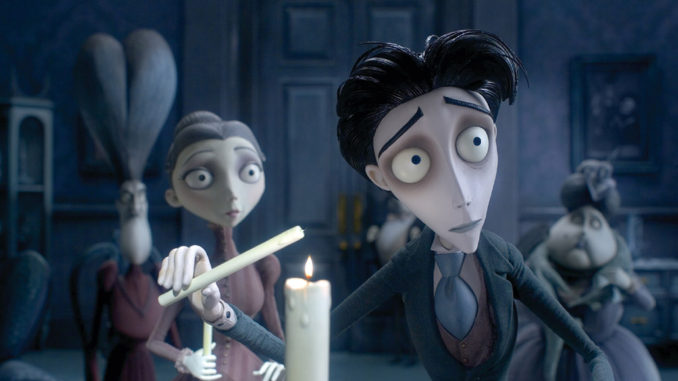
by Robin Rowe
Representing a remarkable step forward in digital filmmaking, Tim Burton’s Corpse Bride is a stop-motion animated feature film created through the innovative use of editing and camera technology. Based on a 19th century Russian folktale of a groom (voiced by Johnny Depp) who marries a zombie (Helena Bonham Carter) by mistake, this groundbreaking work features puppets made from stainless steel armatures covered by a silicon skin. Corpse Bride is co-directed by Burton and stop-motion animation veteran Mike Johnson and is scheduled for release September 23 by Warner Bros.
Technologically, this is a movie of many firsts; it’s the first feature-length, stop-motion film edited using Apple Final Cut Pro (FCP), it’s the first feature shot using commercial digital SLR still photography cameras and, perhaps most significantly, it’s the first movie to choose digital cameras over film cameras based on the criterion of image quality.
Editing Stop-Motion Animation with Final Cut Pro
Corpse Bride is Jonathan Lucas’ first feature as a full-fledged editor. A Guild member since 1993, Lucas has worked as an assistant on more than 20 live action movies, including Harry Potter and the Chamber of Secrets, 101 Dalmatians and Sommersby. It was his work as first assistant editor on last years’ Troy for Warners that brought Lucas to the attention of Corpse Bride producer Allison Abbate. At press time, he was still editing the film at Three Mills Studios in the Bromley by Bow section of London, England, where the production also took place.
“A lot of folks think our footage is CGI,” says Lucas. “It’s so smooth it looks computer-generated. The Canon still cameras are amazing; the quality is pretty unbelievable. If I have to, I can blow it up by 30 to 40 percent without showing degradation.” The immediacy of digital technology speeds the editing process. “I’m editing new footage three hours later, maybe quicker,” says Lucas. “It’s almost instant gratification.” As footage is edited, it replaces storyboard images and slowly the movie gets built.
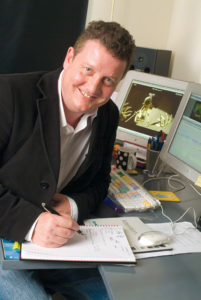
The preparation process for stop-motion is immense. “Shooting is monumental,” says Lucas. “As an editor you are a lot more patient.” He points out that an action film can have 14,000 feet of dailies per day––on Harry Potter and the Chamber of Secrets he had some days with 20,000 feet of dailies. That film, a shoot with children and animals, consumed over a million feet of film.
“Most features shoot in 12 to 14 weeks,” notes Lucas. “With Corpse Bride it’s 52 weeks! We only get two minutes of film a week with stop-motion. One shot can take three weeks. Even so, I’m still refining the story on a daily basis with co-director Mike Johnson.” (Unlike on Frank Miller’s Sin City, the rules of the Directors Guild of America don’t prohibit co-directors on animation.)
It isn’t just the amount of time on the set that’s different about stop-motion production. “The animation process is almost reversed over a live action movie,” explains Lucas. “The storyboards are all JPEG images, and they shoot almost to the frame what’s on the storyboards. At one point, we had five or six storyboard artists working ten hours a day, six days a week. Do they play it in a close shot? A wide shot? It’s fine-tuned for months on end until the director says he’s happy.”
Audio for stop-motion is fine-tuned, too. “I lay in the voice record and sound effects earlier,” says Lucas. “Composer Danny Elfman does all the music for Tim Burton, and I use a lot of his music for the temp track. It’s a pretty good soundtrack before it’s handed off.” Sound DeLuxe–– which also worked on Burton’s upcoming live-action film Charlie and the Chocolate Factory––then adds footsteps (there are a lot in this movie), ADR and alternative sound effects for Burton to choose while Elfman records new music.
“For editing stop-frame animation, Final Cut Pro definitely works,” says Lucas. “It’s fairly friendly with the high-def footage I have.” A longtime Avid editor, Lucas is using FCP for the first time on Corpse Bride. “We inherited the edit system from a previous film crew,” he reveals. “I was thrown into the deep end to learn Final Cut Pro during production. It took me two weeks to master.
“Final Cut Pro is more editor-friendly in some ways than Avid,” he continues. “You can extend a shot without going into trim mode. With Avid, you always had to think what tracks to push down.” Lucas used FCP simply as an editing tool. Digital Intermediate (DI) was exchanged with London’s Moving Picture Company for the hundreds of effects shots in the movie.

While Final Cut Pro can be easier to use and is much less expensive, being a pioneer with it in stop-motion presents some challenges. “We have an awful lot of JPEG storyboards––sometimes up to 12 soundtracks and more than six layers of video,” says Lucas. “I auto-save a lot.”
First assistant Ralph Foster explains that having so many JPEG still frames seems to challenge the system. That demand is unique to stop-motion production. Adding more RAM didn’t help, so to cut down on JPEG overhead, they were converted into QuickTime.
Lucas is running an Apple G5 (dual-2GHz) and FCP 4.5. Although version 5 and Mac OS X Tiger became available during production, there was no switch midstream because of the risk that it might break something in the production’s custom pipeline based on Final Cut Pro 4.5.
Final Cut Pro generates XML data of shot information. XML data, which is just specially formatted text, is much easier to integrate into animation pipelines. For Corpse Bride, data wrangler/computer programmer Martin Pengelly-Phillips wrote a utility in Python computer language to convert the XML data into a flattened reel. The shots get validated for naming and length, and checked against the list of known shots in the editorial database in FileMaker Pro. In Python, a series of AppleScripts are created to update the editorial database with the most recent cut.
The FCP project is 80 minutes long at 720 x 480 (offline) and 23.98 fps (for easier NTSC pull-down). Every shot is a folder of images, and each clip is treated as a reel. The EDL is eventually exported in CMX format for 2K conform on Quantel IQ, then output to film on Arri Laser.
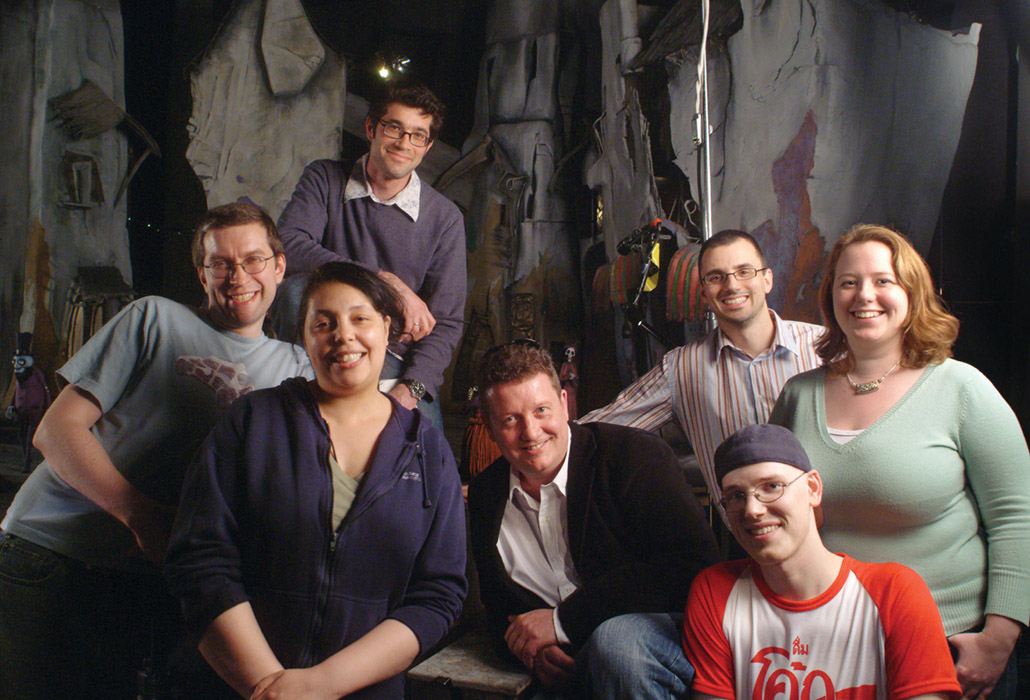
Shooting with Canon SLR Cameras and Nikon Lenses
Corpse Bride has a surprising choice of camera for feature cinematography–– the Canon EOS-1D Mark II––a commercial digital SLR camera designed for still photography. This is a tremendous change in the state-of-the-art from five years ago, when Aardman Animations used custom-built film camera heads based on converted Mitchell cameras for the animated feature Chicken Run. The ancient Mitchells were chosen because the pin registration system was more accurate than any modern motion picture film camera. Finding that same sort of repeatable, rock-solid precision in digital SLR cameras would be a challenge.
While in London working on Harry Potter and the Prisoner of Azkaban, effects consultant Chris Watts happened to have dinner with Warner Bros. visual effects senior vice president Chris deFaria and Corpse Bride producer Abbate. “While discussing Corpse Bride, for some reason, I just assumed it was being shot with digital still cameras,” says Watts. “Chris deFaria is an accomplished photographer and saw the possibilities immediately.” Director of Photography Pete Kozachik and his team had been considering digital acquisition, but not with off-the-shelf SLR cameras as Watts proposed. With the beginning of photography only a month away, digital SLR camera testing began. There were many unknowns:
- Are images from a digital still camera consistent frame to frame?
• Is the quality comparable to film?
• Is the image quality stable under different thermal and humidity conditions?
• Could a system be devised for previewing animations on set?
• Could a system be devised to keep track of all the frames?
• Could a live video tap be created for a digital still camera?
With these issues in mind, Watts set about getting his hands on every digital camera he could find. Canon UK loaned a 10D, a 1D, a 1D Mark 2, and a 1DS. Nikon loaned a D1x, a D100, and one of the new D2H cameras. Watts also tested cameras from Sigma and Kodak. Initial tests were held at Framestore-CFC and the Moving Picture Company in London.
“We shot the same scene on every camera, converted the digital frames using dcRAW [an open-source program that accesses raw digital images], crunched everything to 2K, color-timed the sequences to match using Baselight and then output to film,” says Watts. “Basically, everything looked great until the film-originated version came up, then everyone yelled at the projectionist, ‘Focus!’” The images from digital cameras looked so stunning when projected. The tests convinced Burton, Johnson, Abbate and executives at Warners.
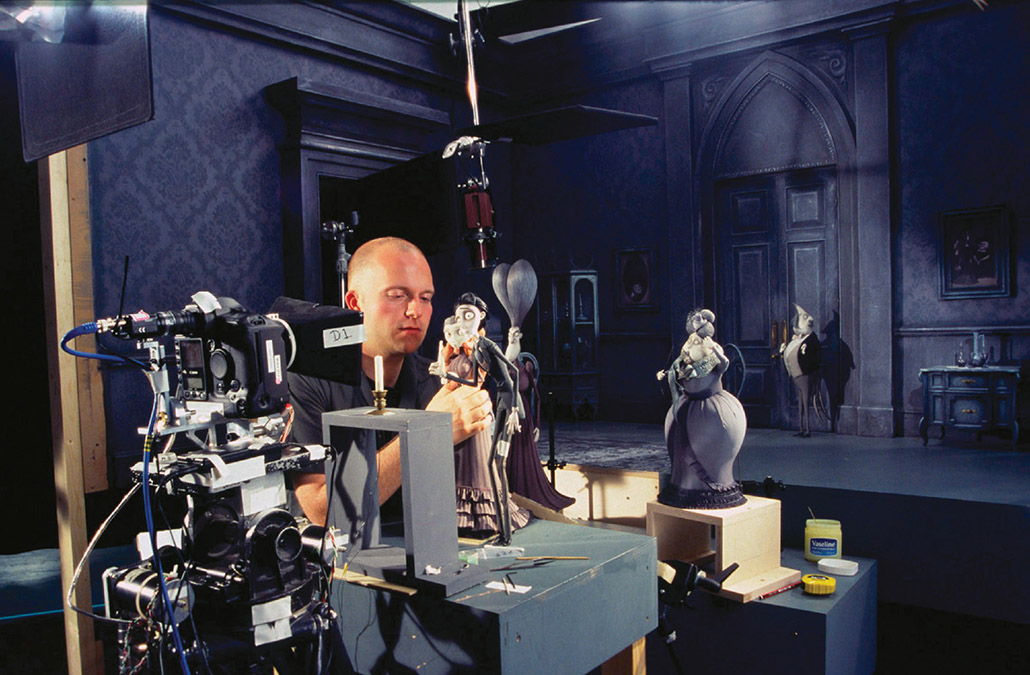
“We originally selected the Nikon D2H because of the wireless ftp, the chip size, and the fact that we owned $90,000 of Nikon glass [lenses],” notes Watts. However, random noise was visible as pixilation in dark areas when the shots were played back as a movie. This pixilation effect was only visible in stop-motion photography, an application the Nikon hadn’t been designed for.
The Canon EOS-1D Mark II, which uses a CMOS sensor and DIGIC II processor chip, was one of the most expensive still cameras tested, but the image quality was amazing, according to Watts. A way had to be found to mount Nikon lenses on the Canon EOS body. With the NEOS adapter, focus and aperture must be set manually, but that’s fine for stop-motion photography.
Although some digital SLR cameras have “video out” ports, by its nature, no SLR shows any video until an exposure is made. A priority was to create a live tap so animators could see what they were doing. DP Kozachik, Watts and chief motion control technician Andy Bowman designed a rig that would allow a small video camera to be mounted on the back of the still camera body, but slide out of the way for fine focus adjustments.
The production bought 24 of the Canons. The original plan for lighting stations was to have a full system at each of the 24 sets, but that was cost-prohibitive. Seven lighting crews shared one station on a mobile cart. Each cart included a Macintosh, Photoshop and a suite of JavaScript, AppleScript and QuickTime tools to enable the lighting crews to view their work as it was developing.
“A lot of folks think our footage is CGI… It’s so smooth it looks computer-generated.” -Jonathan Lucas
FilmLight built software to take a raw file from a digital camera and output a Cineon file with the look of 5248 film stock. Production software incorporated dcRAW and Truelight’s proprietary color transforms. The software took care of resizing and annotation by generating code that directed Apple Shake to produce QuickTime files for editorial and 2K DPX sequences to match the color profile of 5248 film scans. Although the Canon would shoot 4k, the images were wrangled at 2k (2048 x 1365) because that would be the final output with the Arri Laser.
For projection playback, Iridas Frame-Cycler, was run on a Boxx PC. In the Iridas software, 1.85 masking was applied as well as simple color adjustments (printer lights, saturation, contrast and gamma) without disturbing the basic calibration. FilmLight designed a proprietary 3-D color cube for the digital projector that would convert the raw files on the fly to appear as if they had been shot on 5248.
Conclusion
Corpse Bride, along with films like Sin City, lead a trend in using emerging digital technology in ways not intended for feature filmmaking. Whether using gear designed for digital still photography or for HDTV, the visual results are striking.
Digital filmmaking has long been considered a trade-off compared to 35mm filmmaking; digital was cheaper or could do things impossible with film, but at a cost to overall image quality. With Corpse Bride, this is no longer the case.


